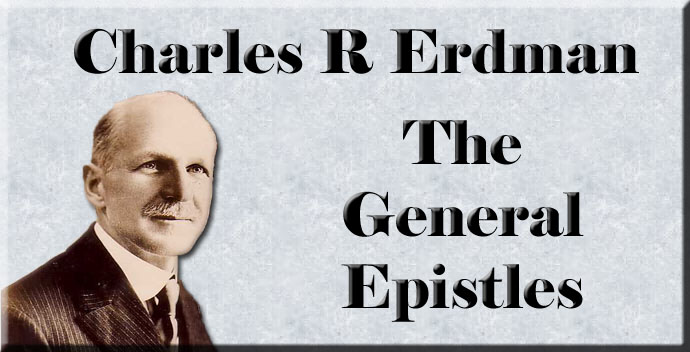
The General Epistles
By Charles R Erdman
The First Epistle of Peter
|
Who does not know Simon Peter, and who has not found in him a kindred spirit? Brave, impulsive, confident, unstable, affectionate Peter! Of all the apostles his career is most vivid in memory, his character is most human and most real. It is easy to imagine his early life as a fisherman of Galilee, or to picture his interest in the preaching of the Baptist and his first meeting with Jesus, or to recall how he left his boat and his nets to become a fisher of men, how he entered the inner circle of his Master's friends and became the leader and spokesman for the Twelve. It is not difficult to sketch the scenes where he attempts to walk on the water, where he boldly confesses his faith in Christ, where he speaks bewildered by the glory of the transfiguration, where he protests his deathless love, where he sleeps in the Garden and awakes to attempt the rash defense of his Lord whom he then forsakes and with an oath denies. We see him weeping in deep penitence, running to the empty tomb, meeting the risen Saviour, and later receiving a new commission in the morning twilight by the lake. How distinctly we remember him as he speaks to the trembling multitudes at Pentecost, heals the lame man at the Beautiful Gate, boldly faces the Jewish rulers, meets Cornelius and opens the Church to Gentile believers, is imprisoned by Herod and delivered by the angel, bravely defends Christian liberty in the council at Jerusalem and denies it in principle by his behavior at Antioch. It is not difficult even to accept the shadowy legends which concern his later life, and to imagine that he preached at Rome, that as he attempted to escape the rising storm of persecution he met his Master at the city gate and asked him whither he was going ("Domine, quo vadis"), and received the reply, "I go to Rome, there to be crucified once more," that he turned back to suffer as the Master had, only with his head downward that he might endure more anguish and more shame than his Lord. It may require more effort, however, to picture Peter as a prominent figure in the world of literature, and to remember that this "unlettered layman," as the rulers regarded him, was one of the authors of the New Testament, one of the immortals among the writers of the Christian era, and to recall the fact that his abiding influence is linked to the two epistles which bear his name. The first of these letters was written to Christians dwelling in portions of what is now known as Asia Minor. Many of these readers were converts from Judaism and Peter writes with continual reference to the Old Testament; but large numbers were Gentiles and frequent mention is made of their former mode of life. More important is the fact that all these converts were in the midst of cruel hardships and temptations. They were not suffering from a persecution instituted by the state but from social ostracism, and from the enmity of fanatical Jews and hostile pagans. They were compelled to endure slander, violence, hatred, suspicion, loss of goods, worldly ruin. To those in distress and trials so bitter and fiery Peter writes to give counsel and comfort, to strengthen faith and to inspire courage. This is an epistle of hope. It points the believer to the blessed issues of trial, and teaches him to regard present darkness in the light of a future which is radiant with the visible glory of Christ. It is composed of three great sections which emphasize successively the privileges, the duties, and the trials of the readers. The presentation is intensely practical. The epistle is in substance a threefold series of earnest exhortations. It may be outlined as follows:
|
|
 |
 |
|
|
|
-
Site Navigation
 Home
Home What's New
What's New Bible
Bible Photos
Photos Hiking
Hiking E-Books
E-Books Genealogy
Genealogy Profile
Free Plug-ins You May Need
Profile
Free Plug-ins You May Need
 Get Java
Get Java.png) Get Flash
Get Flash Get 7-Zip
Get 7-Zip Get Acrobat Reader
Get Acrobat Reader Get TheWORD
Get TheWORD